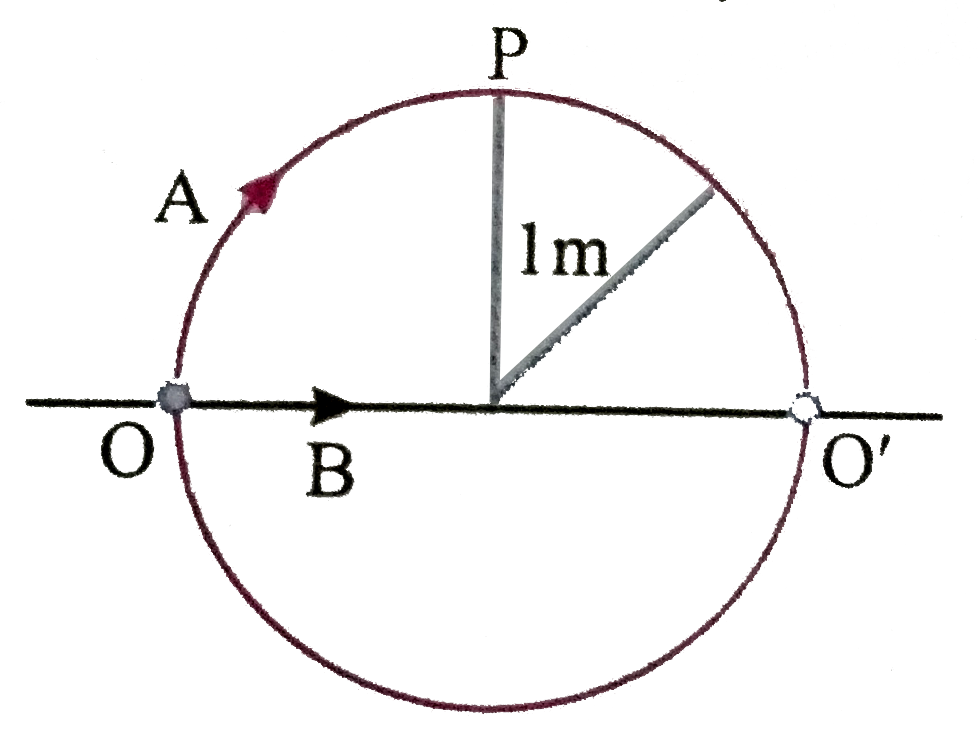A point moves along a circle with a velocity v=t/2. Find the acceleration of the point at the moment when it has covered a quarter circle from the beginning of motion.
v=t2
at=dvdt=12 (constant)
Time taken by the particle to complete a half-circle
s=ut+12att2
πR2=0+12×12t2⇒t2=2πR
ac=v2R=(t/2)2R=t24R=2πR4R=π2
the resultant acceleration when the particle has covered a quarter circle
a=√a2c+a2t=√(π2)2+(12)2=12√π2+1
Topper's Solved these Questions
Similar Questions
A point moves along a circle with a speed v=kt , where K=0.5m/s2
Find the total acceleration of the point the momenet when it has covered the nth Fraction of the circle after the beginging of motion, where n=110 .
View SolutionA particle is moving on a circular path with speed given by v= αt, where α is a constant. Find the acceleration of the particle at th instant when it has covered the nth fraction of the . Circle.
View Solution
Knowledge Check
A point moves along a circle with velocity v = at where a 0.5 m/sec2. Then the total acceleration of the point at the moment when it covered (1/10) th of the circle after beginning of motion -
A0.5m/sec2B0.6m/sec2C0.7m/sec2D0.8m/sec2A point moves along a circle with speed v=at. The total acceleration of the point at a time when it has traced 1//8th of the circumference is:
Av8aB2a√4+π2CaDa2√4+π2A small ball thrown at an initial velocity v0 at an angle α to the horizontal strikes elastically with a smooth vertical wall moving towards it at a horizontal velocity v and returns to the point from which it was thrown. Determine the time t from the beginning of motions to the moment of impact with vertical wall. Neglect friction losses.
At=v0sinα(v0cosα+2v)g(v0cosα+v)Bt=v0sinα(v0cosα−2v)g(v0cosα+v)Ct=v0sinα(v0cosα+2v)g(v0cosα−v)Dt=v0cosα(v0sinα+2v)g(v0sinα+v)
A point mass starts moving in a straight line with a constant acceleration a. At a time t1 a fter the beginning of motion, the acceleration changes sign, remaining the same in magnitude. Determine the time t from the beginning of motion in which the point mass returns to the initial position.
View SolutionA particle of mass m moves along a circle of radius R. Find the modulus of the average vector of the force acting on the particle over the distance equal to a quarter of the circle, if the particle moves
(a) uniformly with velocity v,
(b) with constant tangential acceleration wτ, the initial velocity being equal to zero.
View SolutionA particle 'A' moves along a circle with a velocity v=at, where a=0.50m/s2. Another particle B moves along a diameter OO' of the circle with the velocity v=at. Both the particles start simultaneously at t=0 from the point O on the circle. For these particles, (the radius of circle=1m).

View SolutionA particle moves along a cirvle of radius 'R' with speed varies as v=a0t, where a0 is a positive constant. Then the angle between the velocity vector and the acceleration vertor of the particle when it has covered one fourth of the circle is
View SolutionA point mass moves along a circle of radius R with a constant angular acceleration α. How much time is needed after motion begins for the radial acceleration of the point mass to be equal to its tangential acceleration ?
View Solution

